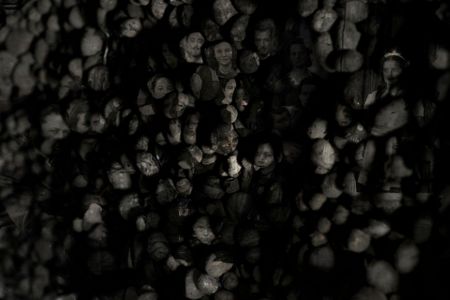THE HAGUE, Netherlands (AP) — A haunting image of red dresses hung on crosses along a roadside, with a rainbow in the background, commemorating children who died at a residential school created to assimilate Indigenous children in Canada won the prestigious World Press Photo award Thursday.
The image was one of a series of the Kamloops Residential School shot by Canadian photographer Amber Bracken for The New York Times.
“It is a kind of image that sears itself into your memory. It inspires a kind of sensory reaction," Global jury chair Rena Effendi said in a statement. "I could almost hear the quietness in this photograph, a quiet moment of global reckoning for the history of colonization, not only in Canada but around the world.”
It was not the first recognition for Bracken's work in the Amsterdam-based competition. She won first prize in the contest's Contemporary Issues category in 2017 for images of protesters at the Dakota Access Pipeline in North Dakota.
Her latest win came less than a week after Pope Francis made a historic apology to Indigenous peoples for the “deplorable” abuses they suffered in Canada’s Catholic-run residential schools and begged for forgiveness.
Last May, the Tk’emlups te Secwepemc Nation announced the discovery of 215 gravesites near Kamloops, British Columbia. It was Canada’s largest Indigenous residential school and the discovery of the graves was the first of numerous, similar grim sites across the country.
“So we started to have, I suppose, a personification of some of the children that went to these schools that didn’t come home,” Bracken said in comments released by contest organizers. “There’s also these little crosses by the highway. And I knew right away that I wanted to photograph the line of these these crosses with these little children’s clothes hanging on them to commemorate and to honor those kids and to make them visible in a way that they hadn’t been for a long time.”
Indigenous peoples elsewhere in the world featured in two other of the annual competition's top prizes. The winners were chosen out of 64,823 photographs and open format entries by 4,066 photographers from 130 countries.
“Together the global winners pay tribute to the past, while inhabiting the present and looking towards the future,” Effendi said.
Australian photographer Matthew Abbott won the Photo Story of the Year prize for a series of images for National Geographic/Panos Pictures that document how the Nawarddeken people of West Arnhem Land in northern Australia fight fire with fire by deliberately burning off undergrowth to remove fuel that could spark far larger wildfires.
The Long-Term Project award went to Lalo de Almeida of Brazil for a series of photos for Folha de São Paulo/Panos Pictures called “Amazonian Dystopia” that charts the effects of the exploitation of the Amazon region, particularly on Indigenous communities forced to deal with environmental degradation.
In regional awards announced previously, Bram Janssen of The Associated Press won the Stories category in Asia with a series of photos from a Kabul cinema and AP photographer Dar Yasin earned an honorable mention for photos from Kashmir titled “Endless War.”
Yasin, together with Mukhtar Khan and Channi Anand, won the 2020 Pulitzer Prize in feature photography for their coverage of the conflict in Indian-controlled Kashmir.
Copyright 2022 The Associated Press. All rights reserved. This material may not be published, broadcast, rewritten or redistributed without permission.





















